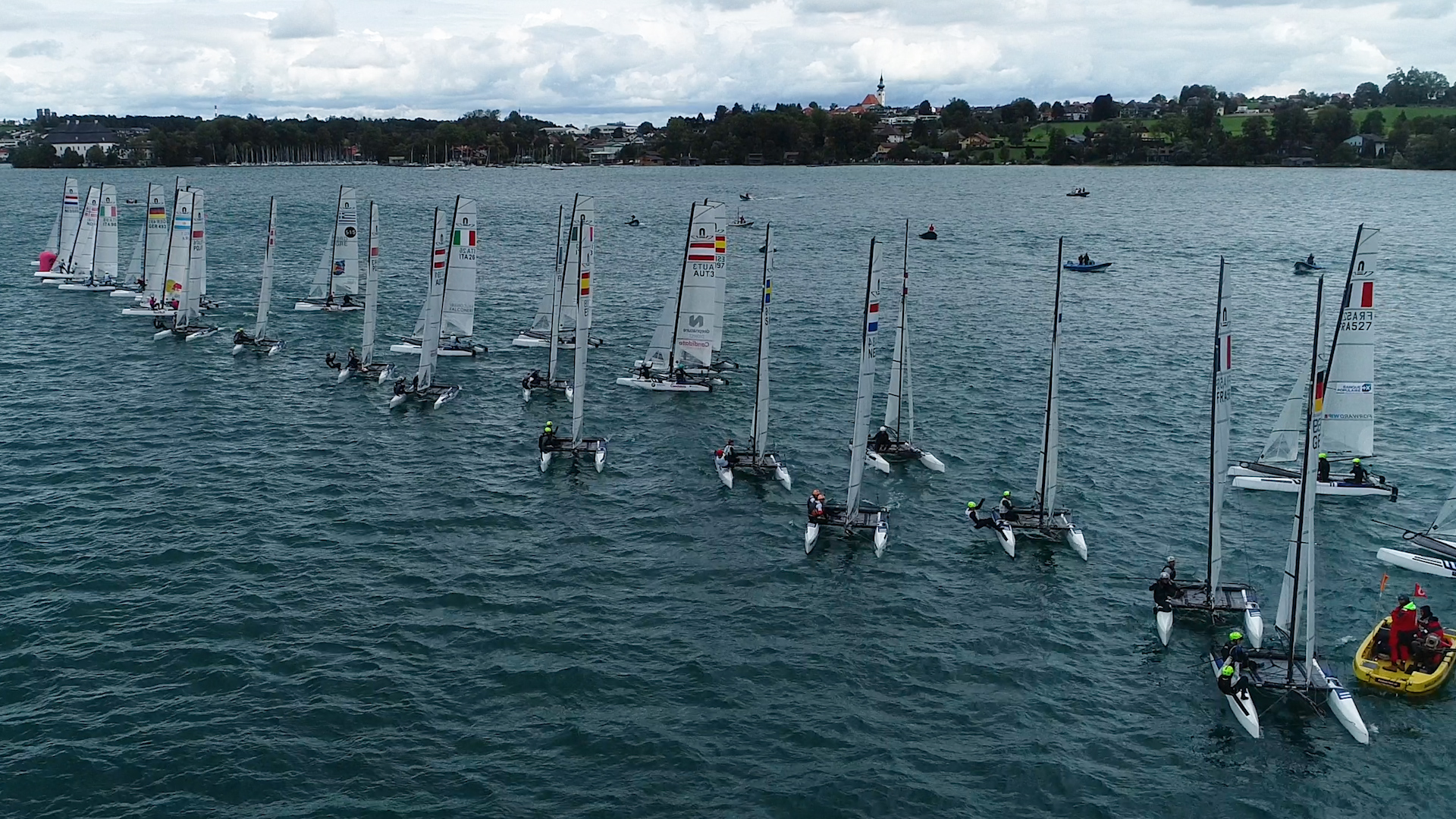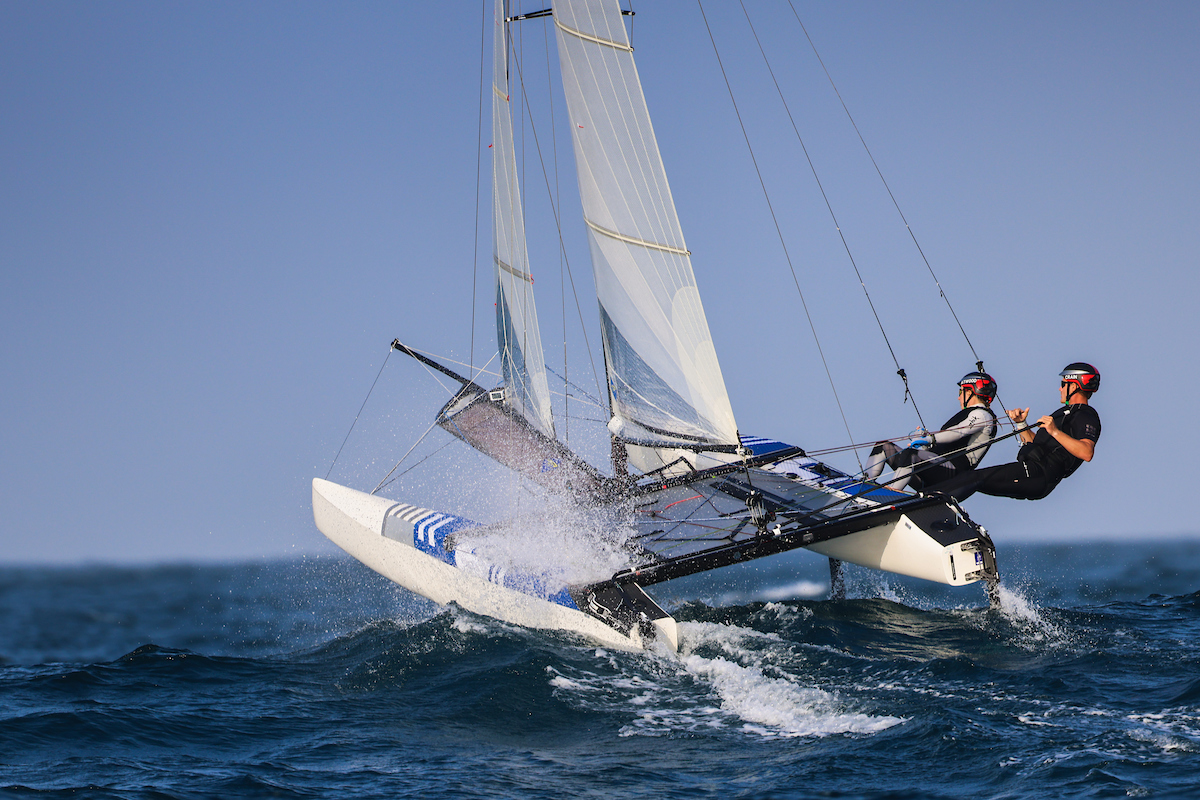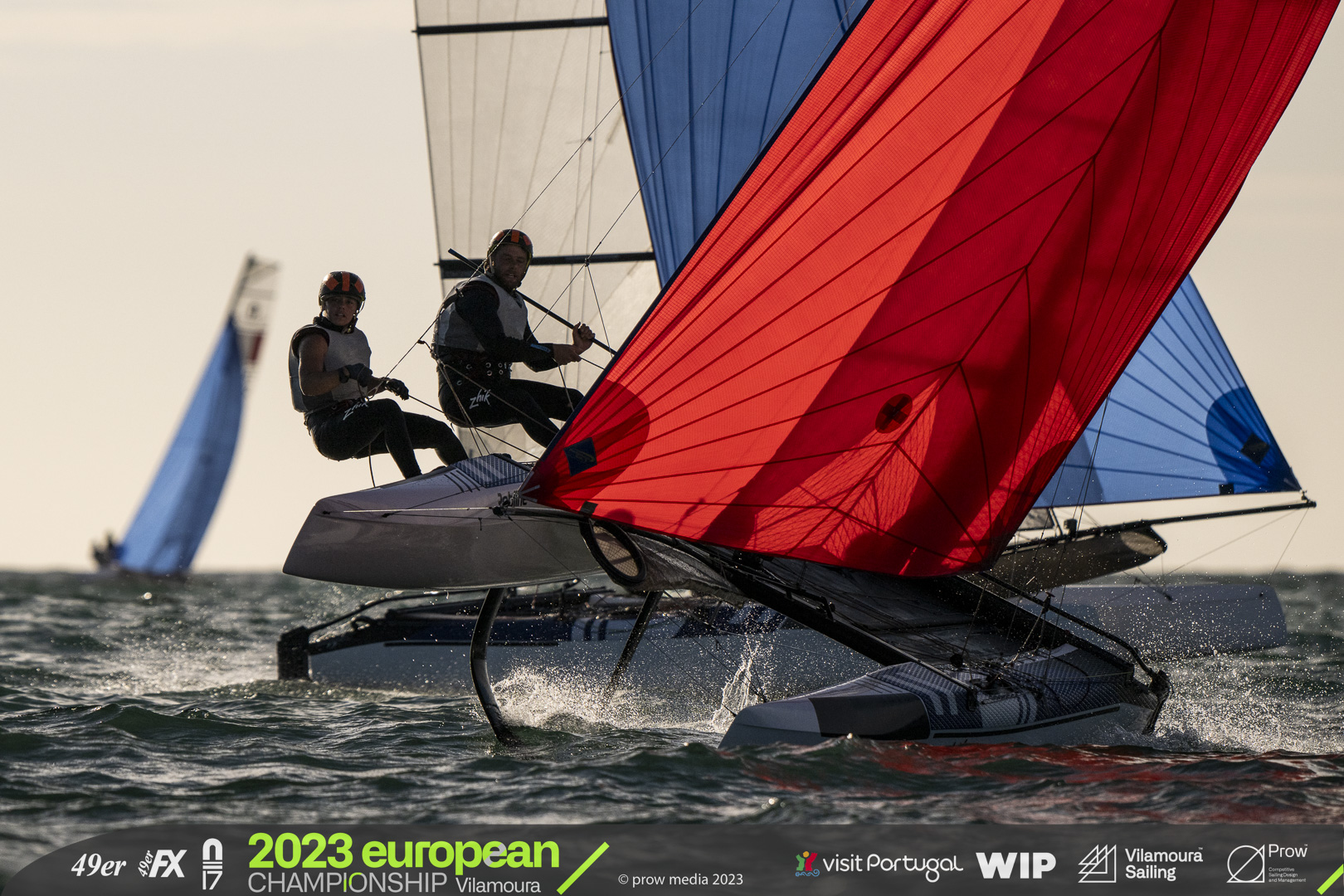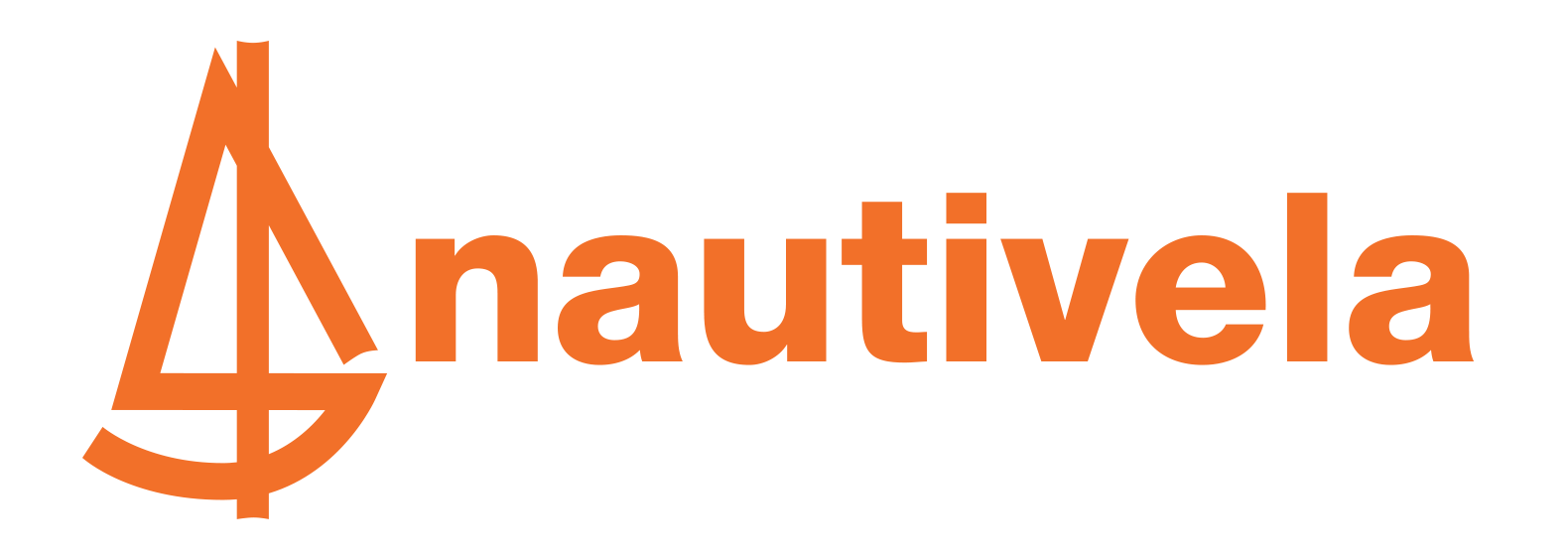Safety
Staying Safe While Sailing Nacra 17
Keeping safe while sailing is a core value of the Nacra 17 Class Association. As the fastest and heaviest Olympic sailing event, we are dealing with higher energy levels than many of our sailors have sailed with in the past. The higher the energy levels present on a boat, the greater the potential there is for a serious safety incident, with energy being equal to mass times velocity squared. We strongly encourage all sailors to report all safety incidents on the World Sailing portal so that we can all gain access to direct knowledge of the risks encountered while sailing.
The sailors on the Nacra 17 circuit are typically highly experienced in complex and potentially dangerous styles of sailing. Many sailors and coaches have experience in elite professional sailing circuits, like the America’s Cup, Sail GP, Volvo Ocean Race, GC32, and M32. They bring and share this experience to the Nacra 17 circuit, and as a class we aim to provide a safety culture suitable for this higher risk style of that comes with foiling and speed.
Highest Risk Case
The highest known current risk for Nacra 17 sailing is from a severe cut to a sailor after falling off the boat and being hit by the rudder and/or elevator. There have been roughly 20 foil strike incidents since the class went foiling, with at least 5 requiring stitches to the sailors who were struck. Three of these incidents required more than 30 stitches to repair large cuts. There are two things sailors should do to decrease the likelihood of a serious incident from the rudder strikes.
a) Reduce the frequency of falling overboard. Sailor should diligently and professionally set up and maintain their trapezing equipment. Each piece of equipment in the trapeze system, from the fitting attached to the mast to the trapeze being worn should be regularly inspected and be specified to handle the impact and point loads that are applied to it. Sailors should pay particular attention to the trapeze bails and trapeze hooks, as to date these have been the more common points of failure, though there have been other points of failure as well.
b) Wear protective clothing to reduce the risk of bad cuts. Falling overboard is a part of our sport. On the Nacra 17 it is most likely from missing a tapeze clip, or being knocked out of a trapeze by a wave, or falling off during a maneuver when not clipped in. Sailors should wear cut resistant clothing and/or impact protective clothing to reduce the risk of a severe cut. Most of the cuts have been to the backs of sailors legs, and therefore this area should be protected at all times while sailing.
Root Causes
When the Nacra 17 was evolved to full foiling, a number of changes to the specification of the boat were introduced, some of which have lead to the increase in serious foil strike incidents.
a) The rudders are now fixed.
The 2016 Nacra 17 rudders were a ‘kick up’ style, and when they were struck with large force, would kick up. This is typical in catamaran design. When the boat evolved for 2020, a kick up style rudder is no longer possible, with the large upward forces derived from the elevators, and need for secure rudder mounting from foiling at high speeds. There is no known kick up system that handles the loads of foiling and breaks away upon impact. As such, when sailors now fall overboard and are struck by the rudder, it impacts with the full force of the boat onto the sailor, unlike before.
Furthermore, kick up style rudders are not deemed a suitable option for foiling catamarans, as the moment a leeward foil kicks up, the boat can become uncontrollable by the sailors on board. This can have serious safety implication for those sailors and any other boats in the vicinity of an incident. Therefore, kick up or breakaway style rudders have been ruled out as an option for the Nacra 17.
b) The rudders are mounted at the outboard edge of the hulls.
The placement of the rudders is at the extreme outboard edge of the hulls, to keep the rudders operating in water unaffected by the wake of the daggerboards. For sailors falling overboard, this make foil strike incidents more likely, as the rudders are closer to the area that sailors might fall into.
c) The rudders have a T elevator, it is sharp, and has a torpedo in the center.
T elevators are more efficient than L elevators, both hydrodynamically and structurally. As such, a T design was chosen for the 2020 Nacra 17 spec. This puts the most outboard edge of the elevator farther outboard than the rudder vertical, and closer to the area a sailor is most likely to fall into.
The center of the T elevator protrudes forward like a ‘torpedo’, which helps in structure and hydrodynamically. This element has also been implicated in some injury reports due to increased point loading of an impact.
For the 2024 update, it is likely that the rudder design will change to an L shape, so more the most outboard elements of the elevator are brought inboard. Additionally, the torpedo will be removed, and the overall leading edge shape will be blunter than the 2020 version. In November of 2018, active sailors were surveyed about the option of introducing a partially asymmetric elevator, without a torpedo and with a blunter shape for use until Tokyo, but rejected the change by a 3:1 ratio.

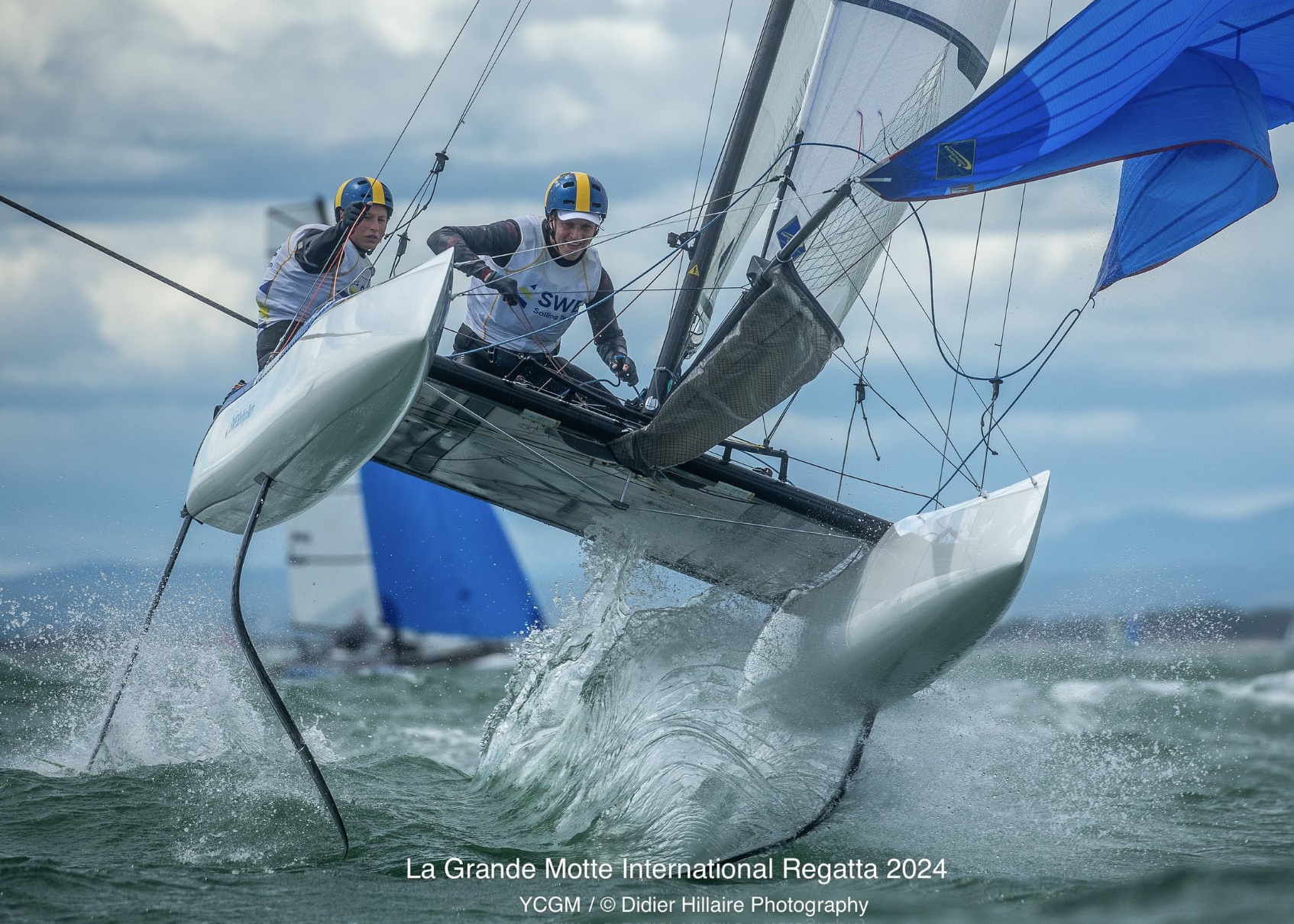

Communication with Sailors
The Nacra 17 Class Executive frequently communicated the facts around safety in our sailing. Regular emails are circulated that include the latest news of safety incidents and mitigation strategies. Fleet safety meetings are held at our regattas, so that sailors can discuss of the risks and understand the best mitigation strategies.
Many of our sailors and race officials also participate in the elite professional circuits of foiling catamaran sailing, like the Ameirca’s Cup, Sail GP, and GC32. We aim to emulate and utilize their experience and established best practices to bring the best safety processes to Nacra 17 events as well.
At our regattas, each Nacra 17 course area has a first responder on the water trained in dealing with severe cuts. Each morning, a coaches briefing is conducted so that up to date safety procedures can be communicated.
Our NOR’s include the safety rally point so that sailors and local emergency personnel know where to meet should an incident occur prior to racing commencing.
Prior to the 2019 European Championship, a free course was offered to sailors and coaches to teach them the basics of first aid in dealing with severe cuts. Prior to the 2019 World Championship, coaches and sailors will be offered to attend a formal first aid course to gain their certifications.
The Nacra 17 class formed a Working Party to deal with 2024 specification change options. Their work was concluded in March of 2024 and a report was circulated to class members and submitted to Nacra Sailing. Nacra Sailing is currently reviewing and testing options for the 2024 boat.
The Nacra 17 class formed a safety working party, whose work is ongoing.
The Nacra 17 class is engaged with multiple sailing clothing manufacturers regarding cut protective clothing. We aim to encourage the marketplace to deliver suitable cut protective clothing for our sailors to wear.
Class Rule changes related to safety since 2016
The class has voted on and sometimes passed a number of safety related items for our class rules. Since 2016, the rules have been updated to require each team to carry a knife, wear a helmet. Rules were also changed to permit the wearing of impact protection. Rule options were further voted upon by the class but not adopted that would have required carrying portable air onboard, requiring cut protection, carrying a strobe light, and carrying a sound signal.
Safety Issues unrelated to foil strikes
Prior to the introduction of foil racing, a risk analysis was conducted and some structural changes were implemented to avoid what the study found to be highest risk scenarios at the time. Specifically, a spreader mark is used to separate upwind from downwind boats at the windward mark. A zone was created above the windward mark and below the finish line where coaches and teams may not loiter so as to provide space for foiling boats to continue on their paths of racing without risk of collision from non racing boats. To date, there have not been any serious injuries resulting from these risk scenarios that the class association is aware of.
Join the Elite Community of nacra17 Sailors and Fans
We are passionate about sailing and the nacra17 class, and we are committed to promoting and growing the sport of sailing around the world. Join us today and be a part of the nacra17 sailing community!.
OUR NEWS
Stay Up-to-Date on the Latest News from nacra17
Young Swedes show Top Guns the way around Attersee
Emil Järudd and Cecilia Jonsson (SWE) showed the world-class Nacra 17 fleet the way round a very tricky Lake Attersee race course on day one of the 2020 Forward WIP European…
Young Italians riding high in the waves
Gianluigi Ugolini and Maria Giubelei of Italy closed in on the Nacra 17 podium after the Italian team posted the best scores of the day, the young crew negotiating the…
Young Italians float out to a bigger lead
Gianluigi Ugolini and Maria Giubilei wove a masterful path through the minefield of a difficult race course to extend their lead in the Nacra 17 fleet on day three of…

